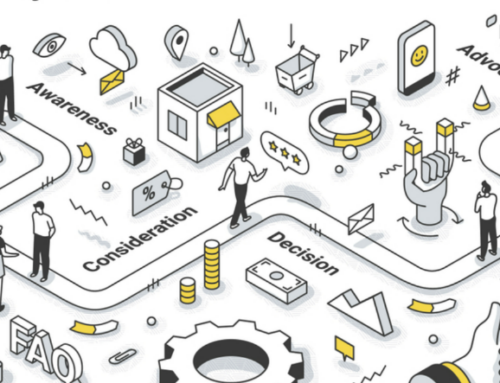An excellent customer onboarding experience can greatly increase the conversion rate, improve the reputation and efficiency of the banks.
In the “new normal” situation, where digitalization is increasingly becoming a trend in various industries, the main question is how we can provide the best possible (online) onboarding experience for our customers?
The main goal of the software is to help banks significantly in the provision of digital services and to enable customers to quickly and efficiently perform all operations online.
For that purpose, banks should consider two elements when choosing customer onboarding software:
- It should be implemented in accordance with the regulations
- It should be easy to use for both clients and the staff
Having these elements in mind, there may be some dilemmas when choosing the software that is the most appropriate for the banks` needs and proper online customer onboarding.
Below, we will try to solve some of those dilemmas.
Paperless Process in Banking
Clients usually go to the bank to fill out forms, take a loan, do identity checks and more. However, traditional service delivery is considered obsolete because it provides a poorer user experience.
As customers’ needs and requirements change, they expect borderless banking, and banks are constantly looking for new ways to achieve easier service delivery – and the starting point is the implementation of paperless processes.
To enhance the online customer onboarding experience, banks have to develop digital first features and implement paperless banking in all steps of their customer onboarding process.
For example, until recently, this type of business processes was mostly provided in ace of statements issued by the bank.
However, paperless banking today encompasses all the services of financial institutions – from new account opening to loan granting.
It provides an enhanced user experience that contributes to the customer satisfaction and eventually decreases customer churn for the banks.
How paperless processes in banks add value for the end customers?
Advances that paperless processes in digital banking have made mean that hardcopies become redundant, as well as being physically present in the banks.
Completing forms, verifying identities, or taking loans online is very easy to do today thanks to digitalization.
Many banks have recognized the huge potential in providing digital services, and are able to meet customer requirements in this regard.
The great advantage of eliminating paperwork is the possibility to provide banking services digitally at any time from any device and from any place with Internet access.
This will make brick-and-mortar offices and branches redundant over time, and banking services will be able to expand to many places that could not be reached before due to physical branch limitations.
But…
This way of doing business raises a number of questions and dilemmas regarding data security.
It sounds paradoxical, but the answer is that a combination of different technologies – such as advanced user verification and identification and security protocols – working in the cross-functional mode, has made banking services more secure than ever before, especially comparing to the offline banking services.
Video identification vs face to face
One of the “hottest” elements of the paperless process.
When financial institutions need to determine the identity of a client, the method that begins and ends face to face at the office is traditionally applied. Some such examples include opening a bank account or applying for a loan. However, nowadays this process is becoming more and more digital and it is possible to establish the identity through a video.
All that one needs for the implementation of this procedure is a device (mobile phone, tablet or computer) with a stable Internet connection and a camera with a valid document to be presented.
However, due to the introduction of new changes in the financial sector, skepticism and a sense of insecurity are emerging (dilemma No. 2).
What is certain is that, today, identification is easier and safer through video conferences than, for example, coming to branches where people must wear masks all the time making verification even harder than before.
Banking e-shop
Selling services online is more common today than ever before, and this trend will very quickly (in this decade) become more popular than the traditional way of selling.
The reason for the popularity of this trend is faster and easier service with just a few taps or clicks on the screen. This form of operation allows clients to use all banking services via the Internet. There should be no skepticism when using these services, because data security is very high, since measures such as encryption for identity protection are applied.
Clients can securely perform financial transactions on the website operated by the bank. Thanks to digitalization, they can quickly and easily get a car or a cash loan, transfer funds to accounts, as well as monitor their balances anywhere and anytime.
Banking e-shop provides many benefits for customers and banks, because this type of business has made life much easier and business simpler and faster. The main advantages are:
- Saving time
- 24/7 access to services
- International banking
- Banks can reach new customers and increase their market share
- Client data is completely private, because the most modern protection technologies are applied.
Real-Time Loans
Life does not wait.
People sometimes urgently need extra money without having time to wait in the banks for several days. Today, this is possible thanks to the 24-hour automated services, which are available for real-time loan approval.
The application of data science and artificial intelligence is the backbone of technology, because the traditional approval of loans is being transformed, so that banks today can approve loans via the Internet in real time. Loan processing, that used to take days, can now be completed in minutes, saving bank client a significant amount of time and stress.
Having all that in mind, paperwork or visits to bank branches are not necessary. Today, credit can be easily approved online by applying through solutions like Digital Origination. This method provides:
- Greater efficiency – employees do not have to verify transactions later
- More accurate data – errors can be corrected immediately
- Better user experience – the client can get a loan without going to the bank
Best of all, getting a loan online is a very simple and quick process. You can complete the entire loan application process on a mobile phone, desktop computer, tablet or smartphone 24 hours a day. The requested funds are immediately transferred to your account, and repayment information is sent by mail.
What is Digital Origination?
Digital Origination is ASEE’s product that will surprise your customers and improve their user experience by enabling them to purchase any mainstream banking product in less than 9 minutes, even if they are new-to-bank customers.
It is a flexible banking solution based on microservice architecture that provides end-to-end paperless banking processes and enables banks to digitalize their offer – from user identification to loan approval.
Digital Origination brings tangible benefits to improve banking operations:
- Ease of implementation
- Flexible platform with ready-made business building blocks
- Swiftly ready to market even for complex product and process modifications.
- Use of BPMN 2.0 standard for process definition and DMN 1.1 for business rules.
- Cost effective integration with existing digital channels.
- Well-defined integration points for fast integration with banking core system, credit bureau, and other internal and external data sources
With ASEE’s Digital Origination, you can accelerate the business goal achievement and significantly improve your way of doing business.
Conclusion
In a fast-paced world where technology is constantly evolving, banks should provide customers with opportunities to enter into a contract in a very short period of time via the Internet.
Improving the digital offer and building a stronger relationship with existing and new customers is a must if banks want to compete for the new wave of customers – the millennials.
Enabling banking clients to manage the entire process from start to finish – whether it’s a new account opening or cash – online is a strategy to be implemented by any bank that would like to implement the digital-first approach.






